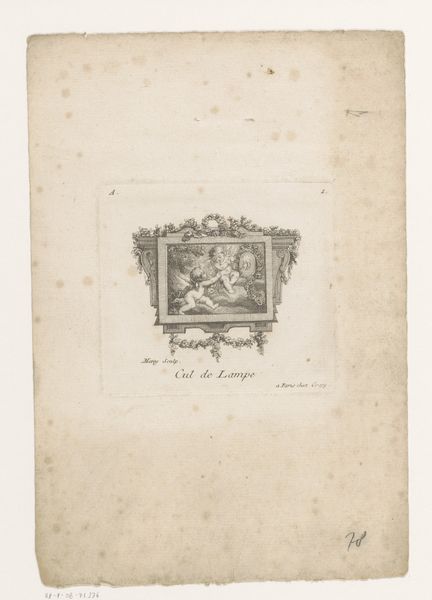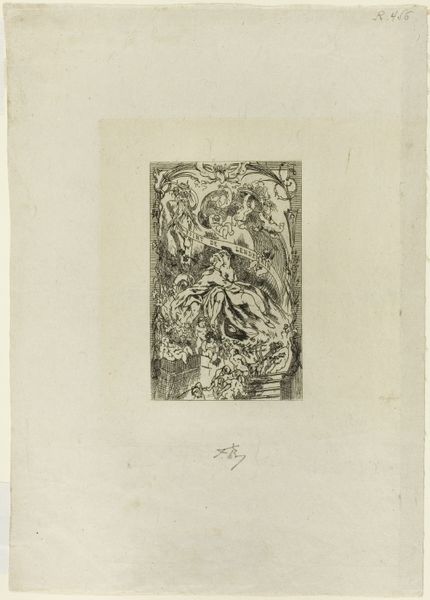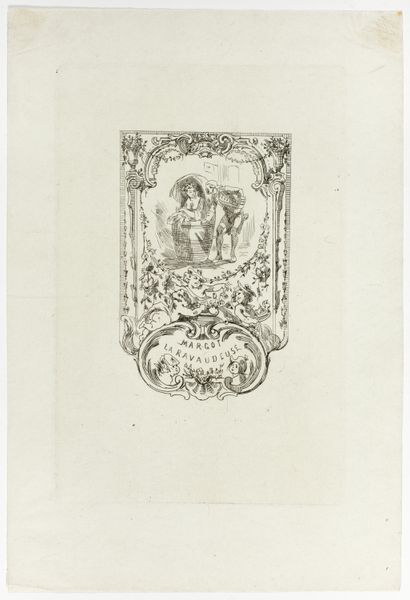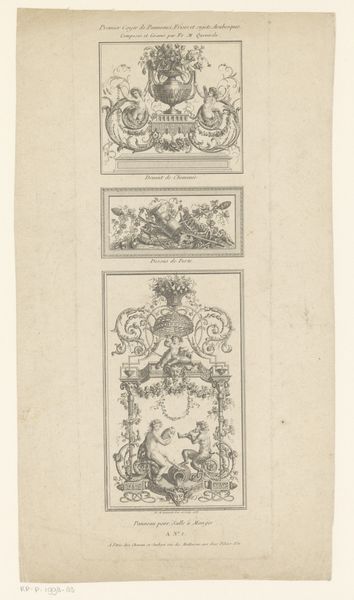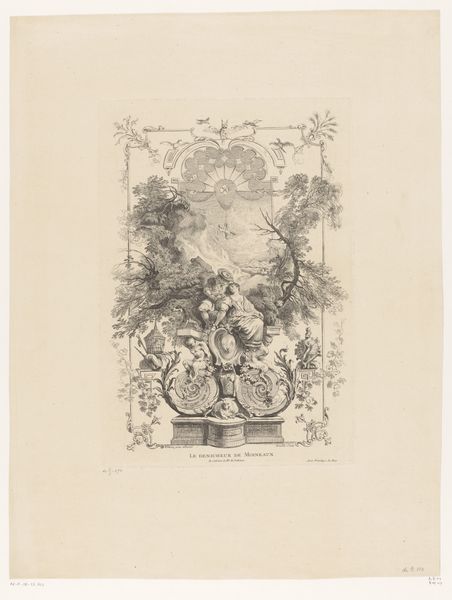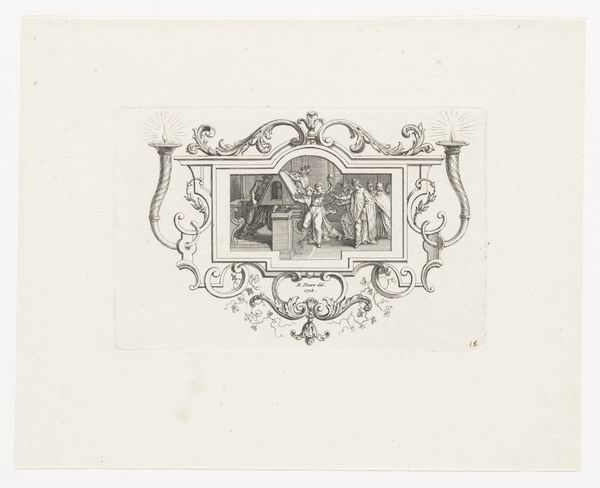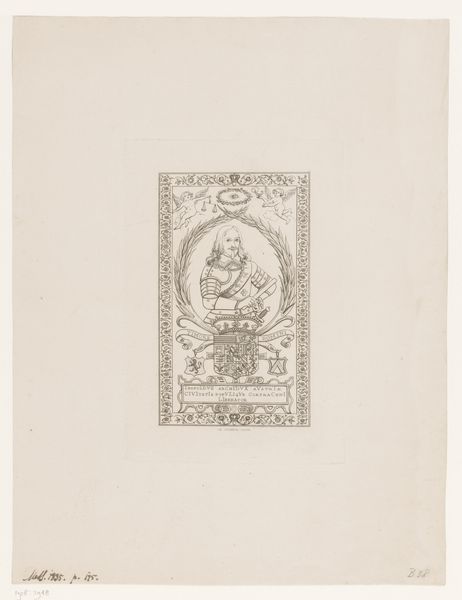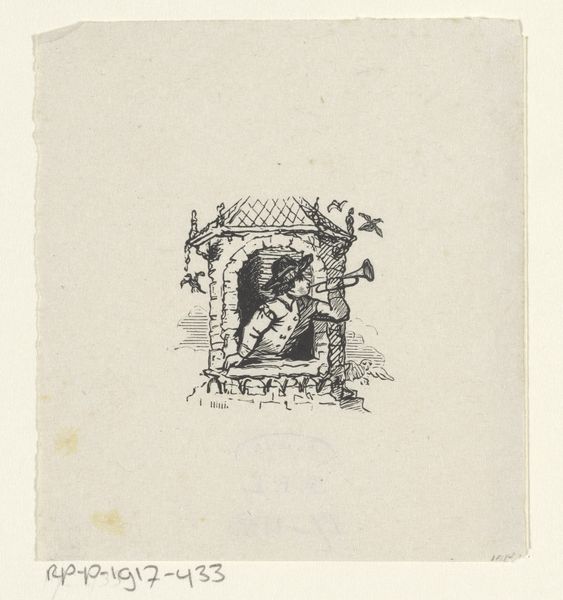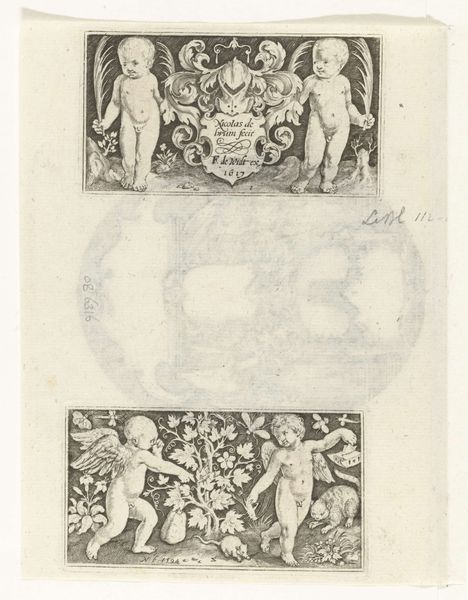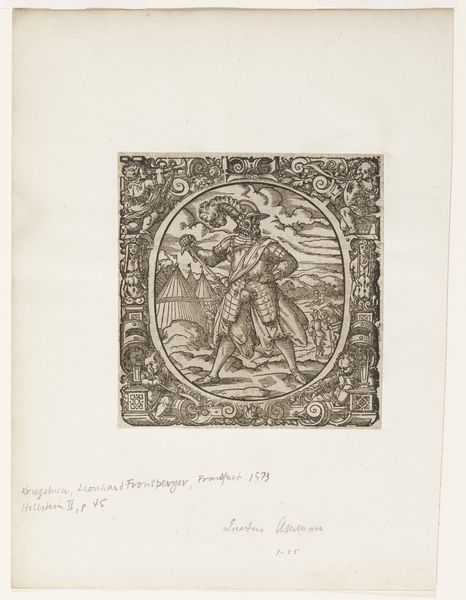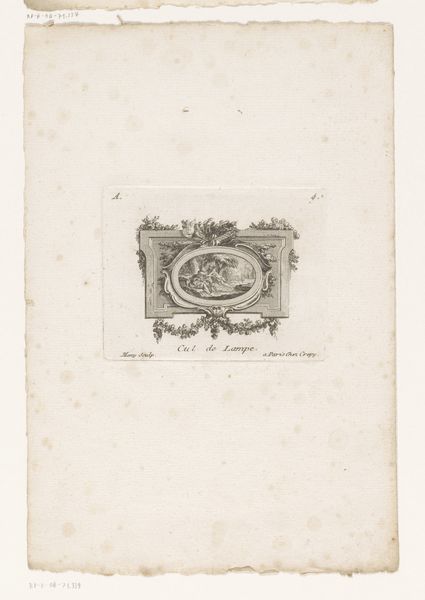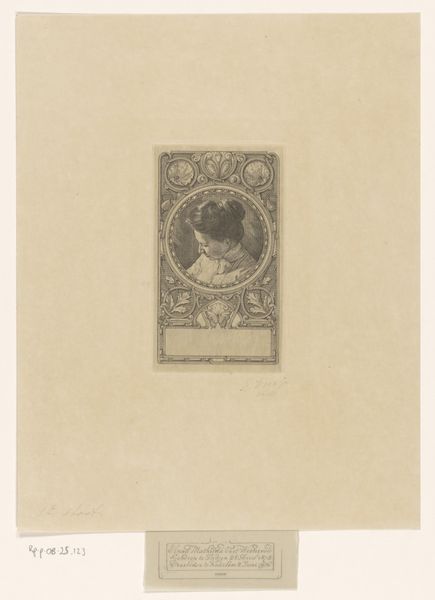
Handelsmerk met Mercurius en Neptunus en het wapen van Amsterdam c. 1860 - 1900
0:00
0:00
Dimensions: height 178 mm, width 145 mm
Copyright: Rijks Museum: Open Domain
Johannes Arnoldus Boland created this print depicting Mercury, Neptune, and the coat of arms of Amsterdam. The exact date of the work is unknown, but we can assume it was made in the late 19th or early 20th century. In this image, Boland combines classical imagery with the civic identity of Amsterdam. Mercury, the Roman god of commerce, and Neptune, god of the sea, flank the city's coat of arms, referencing Amsterdam's status as a center of trade and maritime power. The print raises questions about the relationship between civic pride, capitalism, and the appeal to classical authority. In the Netherlands, the Golden Age of the 17th century saw the rise of a powerful merchant class, and their influence on the art world. How might this history inform Boland's image? By studying the history of Amsterdam, the use of classical imagery in Dutch art, and the history of Dutch heraldry, we can gain a richer understanding of Boland's print.
Comments
No comments
Be the first to comment and join the conversation on the ultimate creative platform.
